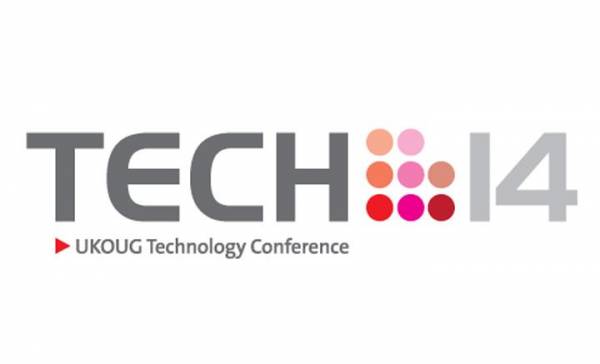
Today, no more sessions on middleware, but a lot of ADF, APEX, developments sessions that looks like really interesting! Unfortunately I can’t attend each one but here are some I selected!
The picture that paints a thousand words: Data Visualization (ADF)
Duncan Mills (Oracle)In this session Duncan was talking about my favorite topic: data visualization. I am quite used to ADF as I developed an interface for my Capacity Planning project. It was sometimes hard to have something clean and well built, a little bit confusing…
But this time as ended! With the new Alta interface!
Instead of building another stack over hundreds stacks, Oracle preferred to re-imagine and rebuild the whole interface. What a good idea. Then Alta was born, more clear, more precise and more “actual”.
It has been rewritten in a mobile based way as it’s the trend. But a new design is not sufficient it also includes more interactions and animations. The UI is designed to be more responsive, clean and simplified. One goal is to build the UI as disclosure info, it means when you click something in a chart the rest will disappear and go into a more detailed view about what you clicked. This way the UI will lead the user to the flow of the information. The user has to “search” the info through a path which builds the context of this information.
There is now a lot of slides and effect to increase this flow. For example you have a new chart build as a multi-layered circle so when you click on a part of the circle it will go into and open this part then build another whole circle to create a new level of information.
You have over than 50 graphs and charts types. All with the same kind of interactions to help the user have a coherence between charts such as zooming, zoomout, selection, redesigned time axis, improved data labeling and so on.
One of the new chars is called NBox. It’s a chart used for categorizing things or people. You have boxes, and you put people in it regarding a filter such as the company sector. You can drag and drop easily, it’s really to classify things.
ADF is getting really beautiful thanks to this new UI design and interactions, allowing more mobile app look and feel is a good thing as more and more processes in the industry can be monitored directly through smartphones.
SQL injection in APEX – More Attacks (& Defences)
Tim Austwick and Nathan Catlow (Recx)This session is more talking about security and SQL injections than APEX itself but they did some demos showing APEX could ease the usage of SQL injections.
Tim started by introducing his company Recx as they built a tool called ApexSec which can point out SQL injections spots in an APEX application; they said it can find about 90% of breaches. Thanks to their tool they heavily improved the security of Oracle Application Express, a tool from Oracle helping building application quite fast.
For Tim and Nathan, a SQL injection can be spotted when you don’t execute the SQL directly but you first generate the SQL and then send it to Oracle Database. In fact there is several kind of breaches such as dynamic SQL or query substitutions; these are the most found. It happens most of time when SQL write and execution are separated.
With SQL injections you can gather more data by adding columns or table joins, this is a “select” injection. You can also corrupt data, this is called an “update” injection. Then you have more serious issues when you can insert code between BEGIN and END in a PL/SQL function as you can call other functions or procedures such as Oracle procedures, which can be harmful for your application or database.
For example Tim did a live demo on how he could insert a call to the LDAP package and then connect it to his own LDAP on his machine. The result? He managed to get credentials directly in his LDAP console! Could be a serious issue isn’t it?
Vulnerabilities can appears if you append a variable in the build process of your query: when you put it at the end. Also when you create a function returning a SQL command. You better use bind variables instead of substitutions.
Tim also presented another demo where he managed to push a hidden button that committed a text area through a short javascript script. Thanks to a breach in the SQL behind the text area he could get the database version. With a simple research he found a known issue in this version. Then he wrote a pl/sql script and injected it in the text area. He managed to set the java permission to the schema, then he wrote a file directly on the file system with a script within. He could execute the file as sysdba as it was on the local system. The script gave the schema the DBA privileges, then he could get the passwords.
It was an amazing session.
Their advices to avoid SQL injection are the following:
– Avoid substitutions directly in SQL and prefer bind variables
– Ensure that APEX objects are protected
– Use APEX 4.2.1 or above
– Avoid dynamic SQL
Conclusion
This is the last day of UKOUG 2014 and we clearly see that the middlewares trend is the Cloud, Mobile applications and of course security. I can’t wait to see more sessions in the next UKOUG!
![Thumbnail [60x60]](https://www.dbi-services.com/blog/wp-content/uploads/2022/05/Middleware-TO_Final-wpcf_173x250.png)
![Thumbnail [90x90]](https://www.dbi-services.com/blog/wp-content/uploads/2022/08/OLS_web-min-scaled.jpg)